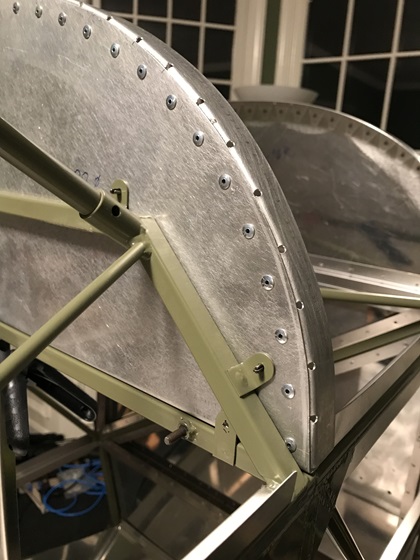Aircraft Maintenance: Rivet basics
Holding it all together
It would be wonderfully convenient if someone could eventually find a way to simply stamp out or 3-D-print a complete aircraft from a single piece of material. However, until that time comes, aircraft will continue to be constructed by assembling many smaller parts into a larger, finished product.
The methods used to assemble aircraft structures vary depending on the medium. Wood and composite structures can be assembled using glued or bonded joints. Some metal aircraft, such as the Grumman American AA-1/AA-5/GA-7 aircraft also use bonding, but the vast majority of metal aircraft are assembled using the ubiquitous rivet.
There are several advantages to solid rivets. They are quite strong by virtue of the fact that they fill the entire hole with solid aluminum, work-hardened by the driving process. But, another important factor is cost. They are so inexpensive that they are typically sold by weight rather than quantity. Considering that the average aircraft may have thousands of rivets, the cost of the rivets matters. However, there are also disadvantages to solid rivets. They require skill and sometimes more than one person to properly install, and they require access to both sides of the material in order to drive the rivet.
Pulled rivets, commonly referred to as “POP rivets,” don’t feature prominently in the construction of certified metal aircraft. Part of the reason is that they came quite late to the party. Historians have found evidence of wooden rivets dating from as far back as 3,000 B.C. in ancient Egypt, while the revolutionary “POP” brand rivet wasn’t invented until 1934. Other factors that limit the popularity of pulled rivets include the cost of the rivets and lower strength, compared to solid rivets.
Pulled rivets, also known as blind rivets, are made up of two pieces: the rivet body and the shank. You begin with the same matching holes while holding two components together. The rivet is then inserted into the hole from one side, and a rivet puller (commonly referred to as a rivet gun) is used on the same side to pull on the rivet stem. Since the entire process is completed from one side of the joint, the installer can be “blind” to the other side of the piece, hence the name: blind rivets. As the rivet gun pulls on the stem, it pulls the entire rivet body together, making it swell and forming the rivet shop head on the opposite side. The secret to the pulled rivet is a small notch in the shank that is an engineered weak point in the design. Once the rivet cannot be compressed further, all of the force goes into pulling on the shank until it breaks at that notch. You hear a “pop” sound, the rivet gun comes away, and the process is done. Voilà!

Specialized pulled rivets, such as CherryMax structural rivets, retain the part of the stem that does not break away as a structural part of the finished rivet. However, most common pulled rivets rely only on the hollow rivet body for their strength and are not as strong as comparable solid, driven rivets, so aircraft designers have to use a greater number of pulled rivets to do the same job. For example, a designer may have to use five pulled rivets in a location that would require only three driven rivets.
Using more rivets over the same span is not necessarily a bad trade off. It’s a fairly common practice on aircraft skins to use more rivets than are structurally necessary in order to obtain a smooth seam between overlapping sheets of aluminum. In some cases, if designers only used the minimum number of rivets required, overlapping skins would have gaps and bulges that would not have the look of a well-finished product.
This leads to the question: As long as you’re going to have a higher density of rivets for aesthetic reasons, why not substitute pulled rivets and save a lot of time in the process? This is exactly what we have been seeing in many recent aircraft designs in the experimental and light sport aircraft markets. Well respected kit companies such as Sonex, Murphy, Zenith, and Titan rely almost entirely on pulled rivets for their aircraft. It lowers both the expertise and time required to assemble the aircraft and makes it easy to build structures with limited access, such as ailerons or flaps.
At SocialFlight’s T–51 Mustang “home workshop,” we are becoming intimately familiar with riveted structures, and learning a lot about how GA aircraft are assembled in the process. Just like the iconic WWII fighter it’s modeled after, the Titan T–51D Mustang that we are building is a metal aircraft. However, unlike the North American P–51 Mustang, the bulkheads, formers, and skins on our replica Mustang are assembled using a combination of pulled rivets and adhesive to an underlying steel frame. Next to “How do you intend to get the finished plane out of your house?” our use of pulled rivets versus solid rivets is a common question we receive about our project. Hopefully, we’ve answered a few of those questions here.
If you would like to follow our T–51 build progress, be sure to visit the SocialFlight website and our SocialFlight T–51D Mustang build videos on YouTube. Hint: We give away cool T-shirts to some of our vocal fans.Until next time…Happy Flying!


